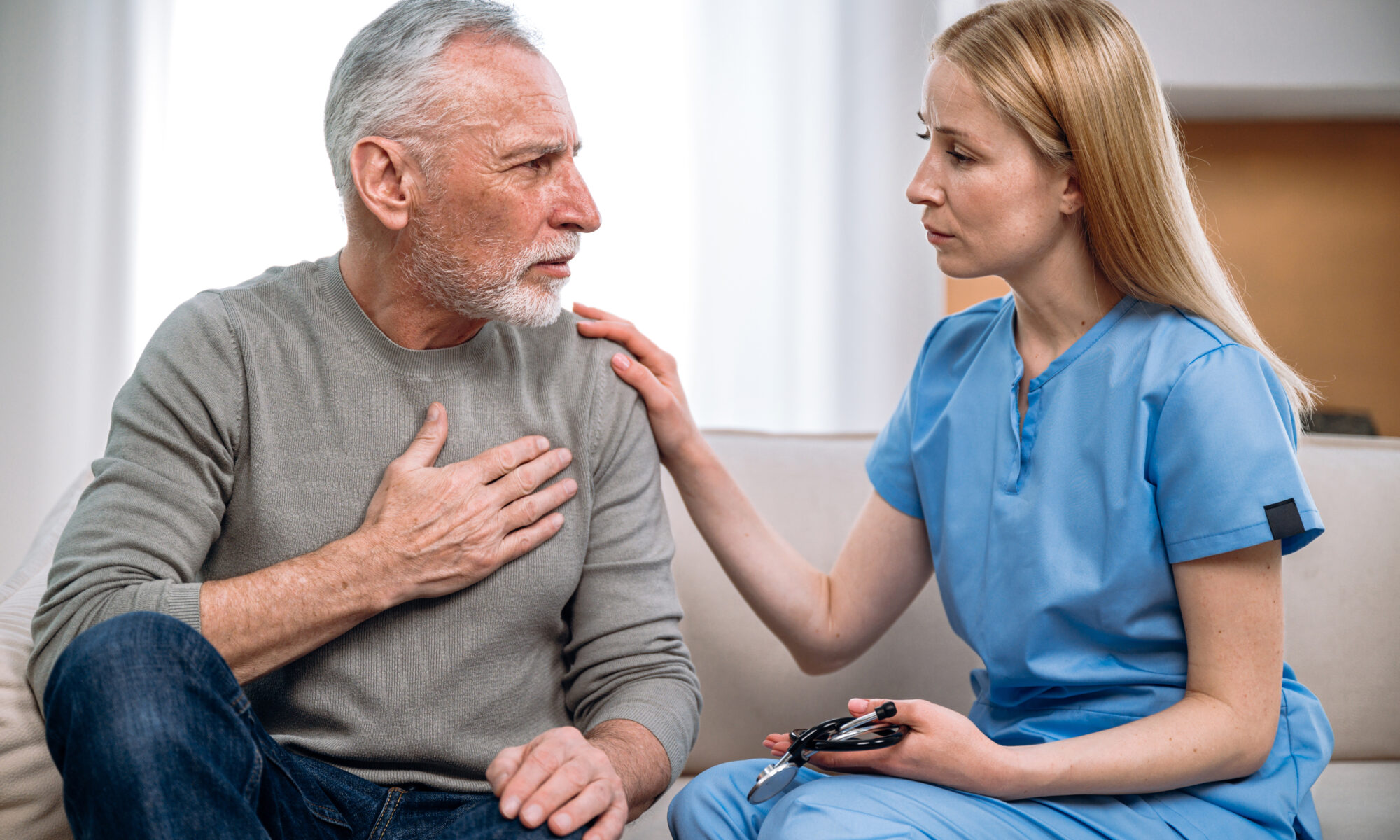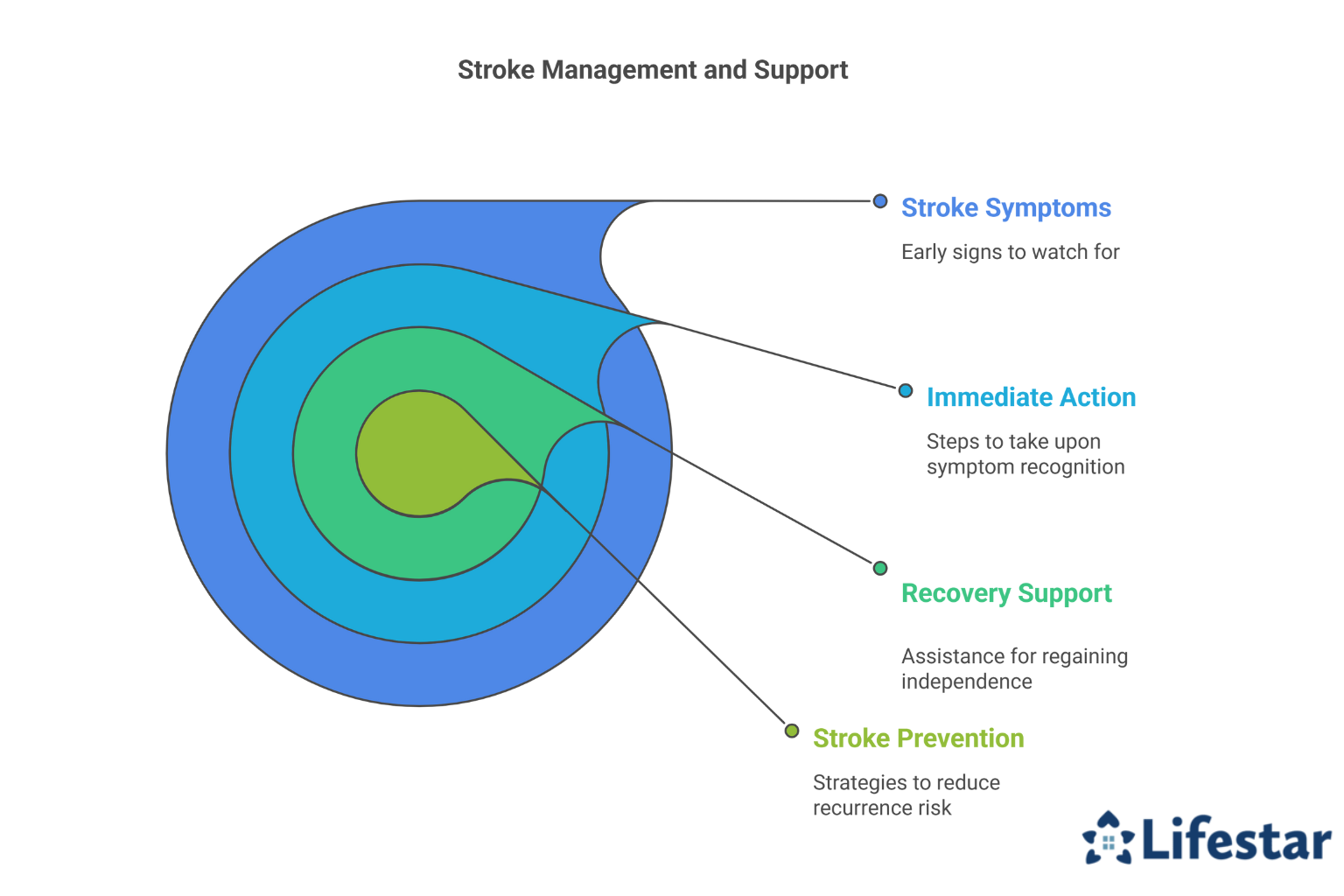
Table of Content
A stroke is a medical emergency that occurs when blood flow to the brain is interrupted or reduced. Recognizing the early signs and taking immediate action can save lives and significantly affect recovery outcomes. Equally important is understanding how to support a stroke survivor during the recovery process.
Key Symptoms to Identify a Stroke
Timely identification of stroke symptoms is critical for increasing the chances of a full recovery. Here are some typical warning signs to watch for:
- F.A.S.T.: the key warning signs
The acronym F.A.S.T. is often used to identify and respond to the major symptoms of a stroke:
- Face drooping – Watch for a drooping or uneven smile.
- Arm weakness – Ask your loved one to raise both arms. One arm may drift downward or fail to lift properly.
- Speech difficulty – Listen for slurred or impaired speech.
- Time to act – If any of these signs are present, call 911 immediately.
- Additional symptoms
Beyond F.A.S.T., other symptoms can include sudden confusion, vision problems in one or both eyes, dizziness, loss of coordination, or an intense headache. These symptoms often occur suddenly and with no warning.
If your loved one has health conditions that increase his or her stroke risk, consider hiring an in-home caregiver. Many older adults are choosing to age in place, and some need a helping hand to continue living at home safely and comfortably. Luckily, there is professional home care Oklahoma City seniors can trust and rely on.

Types of Stroke and Their Symptoms
Understanding different types of strokes sheds light on how symptoms may manifest.
- Ischemic stroke
This is the most common type of stroke caused by a blockage in the blood vessels supplying the brain. Symptoms often include difficulty speaking, weakness on one side of the body, and sudden vision loss.
- Hemorrhagic stroke
This occurs when a blood vessel in the brain bursts, leading to bleeding. Symptoms may include a sudden severe headache, nausea, vomiting, and immediate loss of consciousness.
- Transient ischemic attack (TIA)
Also known as a mini-stroke, a TIA presents temporary symptoms similar to a stroke. They usually last a few minutes to hours and should never be ignored, as they often signal a full stroke is imminent.
Strokes are one of the most serious health issues in older adults. If your elderly loved one is living with a serious medical condition and needs help managing the tasks of daily living, reach out to Lifestar Home Care, a senior home care agency you can trust. Our caregivers are available 24/7, there are no hidden fees in our contracts, and we offer a 100% satisfaction guarantee on all of our in-home care services.
The Importance of Immediate Medical Attention
When addressing a suspected stroke, time is of the essence. Delays in treatment can lead to extensive brain damage and long-term disabilities.
- Why time matters
When a stroke occurs, brain cells begin to die quickly due to lack of oxygen. Acting within the first few hours can allow doctors to administer treatments like clot-busting drugs or surgical procedures to restore blood flow.
- When to call emergency services
Avoid driving your loved one to the hospital yourself. Instead, call an ambulance so paramedics can start life-saving interventions en route to a medical facility equipped to handle strokes.
Supporting Recovery after a Stroke
Recovery from a stroke is a challenging yet essential process. Understanding and providing the right type of support can make a world of difference for stroke survivors.
- Physical rehabilitation
Most stroke survivors benefit from physical, occupational, and speech therapy. These programs help seniors regain strength, mobility, and communication skills that may have been impaired.
- Nutrition and lifestyle
A healthy diet focusing on whole grains, fruits, vegetables, and lean proteins supports overall recovery. Encourage physical activity as approved by a doctor to aid in regaining mobility and preventing future strokes.
- Mental and emotional support
Coping with a stroke isn’t only physically taxing but also emotionally draining. Depression and anxiety are common among survivors. Be patient and supportive, and consider counseling or support groups for further assistance.
- Promoting independence
Encourage small achievable goals like grooming independently or preparing a simple meal. Such tasks help seniors rebuild confidence while fostering autonomy.
Preventing Recurrence
Reducing the risk of another stroke is a high priority for both survivors and their caregivers.
- Medication adherence
Survivors are often prescribed medications for blood pressure, cholesterol, or blood thinning. Following the prescribed regimen is crucial to keeping conditions like hypertension under control.
- Regular checkups
Routine follow-ups with healthcare professionals can detect and manage risk factors in time.
- Lifestyle changes
Eliminating smoking, limiting alcohol, maintaining a healthy weight, and managing stress are key to preventing a secondary stroke.
Recovering from a stroke, managing the symptoms of Alzheimer’s, and a variety of other health-related situations can make it difficult for a senior to continue living at home without someone there to help. Oklahoma City, OK, live-in care professionals are trained to help seniors who need 24/7 assistance. With the help of a live-in caregiver, your elderly loved one can maintain a higher quality of life while aging in place. To hire a dedicated caregiver, call Lifestar Home Care today.